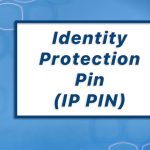Neilley & Co. CPA Blog
- Written by Grant Neilley
- Published: Feb 09, 2021

State Unemployment Scams
Thousands of Ohioans are learning that someone used their name and social security number to file unemployment claims. Many receive a surprise Form 1099-G reporting unemployment benefits they never even applied for, let alone received. Other times, it surfaces when they or their employer receive notice of an application being filed with the Ohio Department of Jobs and Family Services (ODJFS).
If you learn about fraudulent use of your information for unemployment, report it on their website at www.unemployment.ohio.gov. If you receive a 1099-G for amounts you didn’t receive, they should issue a corrected 1099-G to you showing zero, but even if they don’t, you don’t need to pay income tax on it.
How you want to proceed from there is up to you, but now you know your social security number is out in cyberspace. A few things you might consider:
- Sign up for an identity protection service such as LifeLock, Experian, etc.; some organizations, such as AAA or AARP for example, also offer these services to members;
- Put a security freeze on your credit report with the big three reporting agencies, Experian, Equifax or Transunion; and/or
- Enroll in the IRS IP-PIN program that we discussed in a January blog post.
On a personal note, I received one of the claim verification notices myself, so I feel your pain! I’ve always resisted signing up for something like LifeLock or Experian, wondering what happens if then THEY get hacked?! But even before this incident, I was resigning myself to the idea that ID leaks are inevitable in our ever-increasingly online world, and it’s only a question of when it will happen, not if. Receiving that notice was the trigger for me to finally bite the bullet and sign up.
Whether you are hit with this particular fraud or not, we encourage you to enroll in the IRS’ IP-PIN program. See our January 2021 blog post or the IRS website for more information.
- Written by Grant Neilley
- Published: Jan 25, 2021

IRS is providing a new tool you can use to help guard against your identity being stolen for tax purposes. ID thieves attempt to file a fake return using your name and social security number in order to get bogus refunds. If they can get their hands on your employer’s name and federal id number, even better! (For them, that is.) This is why even employer identification numbers are increasingly the target of id thieves, and should be guarded just as carefully as personal social security numbers.
Over the last several years IRS has been ramping up systems to identify and reject fraudulent returns. Among their tools has been the creation of an Identity Protection Personal Identification Number, or IP-PIN. It’s a 6-digit number they assign, which changes every year and must be included on a tax return in order to authenticate the filer’s identity.
Previously IRS only assigned these numbers to taxpayers who had a tax id theft incident, but this month they have opened the program up to anyone who wants to enroll voluntarily. If you would like to participate for added security, simply go to their website, irs.gov, and type “IP-PIN” in the search box. The process will step you through a number of verification questions, such as your name and address exactly as it appeared on the last return you filed, and an account number from a bank or credit card account, or a home, student or auto loan. The whole process doesn’t take more than 5-10 minutes (as long as you have all your information handy!), and you’ll get your number online at the end. Be sure to print or copy it to a secure place… you can retrieve it again later if needed, but you’ll have to go through another process.
If you have been assigned an IP-PIN because of prior tax id theft, IRS will mail you a new number every January. If you enroll voluntarily, you will log onto their website and retrieve a new number online every year. Either way, once you’re in the program, you’re in for good.
Granted, this is a single-purpose tool that only protects you from someone filing fake returns in your name. It doesn’t guard against your personal information being used in other ways, such as opening bank or credit card accounts, taking out loans, etc. And it will require taking an additional step each year to retrieve your new number before filing your return. On the other hand, it’s a free and fairly easy to add one more layer of protection in an age when identity theft continues to climb, and we recommend you seriously consider enrolling.
Whether you decide to enroll or not, always guard your social security number, date of birth and other personal information very carefully! Never provide them to anyone without being doubly sure of who you’re talking to, especially unexpected phone calls, texts and emails. And never send them via email, either in the body of the text or as an attachment, as these can be easily intercepted. Ditto for faxing, as most faxes are now transmitted over the internet and computers, rather than through a dedicated phone line to a physical fax machine as in earlier times.
Please feel free to get in touch if you would like further advice or guidance about this or any other tax issues.
- Written by Grant Neilley
- Published: Jan 04, 2021

The ever-evolving landscape of PPP loans took another turn last week when the President signed COVID relief legislation. Probably the most widely publicized provision was the opening of another round of PPP loans. Just as important however, Congress clarified that any expenses paid with forgiven loan proceeds will be fully deductible, overriding IRS’s earlier position to the contrary. In addition, more non-payroll costs were added to the list of forgivable expenses, and the deadline to restore headcounts was extended. The rule changes will apply to first round loans as well as new loans in the second round, but only if SBA hadn’t signed off on final forgiveness approval by December 26th. If you didn’t think you qualified for full forgiveness under the prior rules, you should look into these changes to see if they’ll help.
If you were eligible for the first round of PPP loans but didn’t take one, in most cases you’re out of the running for a second round loan (there are a few exceptions). If you DID take a PPP loan last year, you may be eligible for another one if your gross receipts for any given quarter in 2020 were at least 25% lower than the same quarter in 2019. Loans are still generally limited to 2.5 times your average monthly payroll, but you have the option to use either 2019 or 2020 payroll as the base period.
As before, borrowers in the second round must certify that the loan is “necessary” for the continued operation of the business. The word “necessary” however, is not defined. Before you simply take the view that “necessary” is in the eye of the beholder, consider that SBA may be a lot stricter this time around; you’d better have a good reason if you’re ever asked to justify your loan request.
SBA has until January 6th to issue guidance for the new round of loans which will almost certainly bring even more changes, but then we expect lenders to open their application process soon after. Funding is substantially less than last year, so if you have any thought of applying for a first or second loan, it is important to prepare now so you are ready to go just as soon as applications open.
These are just a few of the highlights of the new PPP provisions. There are many more issues surrounding eligibility and forgiveness which you need to understand in detail before diving in. If you would like to learn more or could use some help getting ready to apply, please contact us.
